 The rock art of Arequipa (southern Peru) is characterised by several idiosyncratic images, like ‘Dancers’. However, also rather simple elements form rare and uncommon configurations that are composed of grooves, arcs of dots and crosses that are hovering over or are emanating from zoomorphic petroglyphs, yet intimately associated. Similar configurations prove to be very rare in global rock art.
The rock art of Arequipa (southern Peru) is characterised by several idiosyncratic images, like ‘Dancers’. However, also rather simple elements form rare and uncommon configurations that are composed of grooves, arcs of dots and crosses that are hovering over or are emanating from zoomorphic petroglyphs, yet intimately associated. Similar configurations prove to be very rare in global rock art.
By Maarten van Hoek
*
Of Arcs and Dots
Enigmatic Configurations in Arequipa Rock Art, Peru
Maarten van Hoek – rockart@home.nl
INTRODUCTION
The investigation of a major rock art site often yields – among other figures – an array of very simple elements like cupules or dots, short lines, simple crosses and small circles, especially when it concerns a site with petroglyphs. In this respect the rock art repertoire of the Majes Valley in the Department of Arequipa, southern Peru is no exception. Interestingly, this valley not only houses the biggest rock art concentration of Peru (and possibly also of Southern America), but also many most complex rock art images and scenes as well as numerous examples of the simplest elements, especially dots and short lines. Moreover, a few zoomorphic figures are even completely made of only simple dots, without being outlined (Van Hoek 2016).
Especially at Toro Muerto (the biggest site in the Majes Valley) and to a lesser extent at Alto de Pitis (on the eastern bank of the valley) are numerous biomorphic petroglyphs that are mainly filled with small cupules (called dots in this study) and sometimes (together) with short lines (straight and/or curved) and small circles. Frequently, such simple elements are also found outside the bodies of those biomorphs, either distributed near a biomorph, mainly apparently at random, or – more rarely – intimately associated with a biomorph in an enigmatic but clearly premeditated configuration. In this study I will review several cases where – often rather complex – biomorphic petroglyphs are intentionally combined with one or more simple elements, ultimately focussing on biomorphs that are combined with arcs or linear rows of dots or crosses in a most idiosyncratic but definitely conscious way.
*
PART I: ELEMENTS
The Majes ‘Dancer’
It is appropriate to start with the Majes ‘Dancer’, one of the most idiosyncratic figures of the Majes Valley (Figure 1). However, as I very much doubt if this figure is actually dancing (Van Hoek 2003: 169), I prefer to label the icon as the ‘Dancer’, emphasising my doubt about the ‘dancing’ interpretation. Remarkably the ‘Dancer’ exclusively occurs in only two – perhaps three – valleys in Peru: in Majes (with hundreds of examples), in Vítor (with only six examples) and (perhaps) in Manga (Jennings et al. 2019). This unique and possibly very old icon (which has definitely nothing to do with any purported Wari influence; see Van Hoek 2013, 2018) is very frequently found directly associated with (rows of) short (parallel and often zigzagging) lines, long grooves, zigzags, simple circles, small dots and/or relatively large flat-bottomed, recessed discs. Although some researchers suggest that those signs have something to do with music (Núñez Jiménez 1986: 57), the true meaning or function of those simple elements remains completely obscure. Tellingly in this respect, the only three petroglyphs of ‘flute-players’ at Toro Muerto – unique for Arequipa rock art (Van Hoek 2010) – are not associated with any of the essential elements, which would have been appropriate if the music-theory would be valid.
Figure 1. One of the hundreds of the Majes ‘Dancers’ on Boulder TM-Bb-029A at Toro Muerto, southern Peru. Photograph © by Maarten van Hoek.
Figure 2. Petroglyph from the Sihuas Valley, southern Peru. Photograph © by Stephen Berquist.
However, the ‘Dancer’ is not the only anthropomorphic figure that is associated with simple elements. In the Sihuas Valley (46 km east of Toro Muerto) is an almost inaccessible petroglyph of a complex, almost abstract anthropomorphic figure that is associated with two large 🗙 elements (notice the faint ‘Carcancha’ figure to the left of the anthropomorph) (Figure 2). This example, however, is more an exception than a rule in Arequipa rock art.
The Majes ‘Spitter’
In a few types of typical Majes zoomorphs simple external elements are ‘connected’ in a very specific way to those zoomorphs, revealing its possible meaning. The most relevant and again idiosyncratic zoomorph in this respect is the Majes ‘Spitter’. Also this icon only occurs exclusively in Majes (numerous examples) and Vítor (four examples). This zoomorph is always depicted fully laterally and has a basic zigzag shape in which the hind leg (always singly depicted) is often somewhat larger, creating the impression of a jumping kangaroo (Figure 3). From its mouth a line or a group of short, single or parallel arranged grooves (sometimes dots) emanates, giving the impression that the zoomorph is ‘spitting’ and only for that reason I subjectively baptised this configuration the ‘Spitter’ (Van Hoek 2003). However, this label is most likely incorrect, as it is by no means certain that the line of short grooves actually represents spit. Another interpretation is that the group of lines symbolise sound. This alternative reading is enhanced by the fact that also several bird petroglyphs and some other zoomorphs have similar emanations (although mainly in single lines of dots).
Figure 3. One of the many Majes ‘Spitters’ on Boulder TM-Aa-066 at Toro Muerto, southern Peru. Photograph © by Maarten van Hoek.
If indeed those ‘spitted’ elements do symbolise sound, this would mean that the invisible was made visible (Van Hoek 2019). However, it is also possible that the invisible (sound) intentionally remained invisible, but is still suggested to be present. The Majes ‘Howler’ may be a possible example representing both possibilities. Its purported ‘sound’ may remain invisible (nothing in front of its mouth; the great majority) or may have been made visible via simple elements in front of its mouth.
The Majes ‘Howler’
Another typical Majes zoomorph is the ‘howling’ animal. It again is always depicted fully laterally and often has a clearly open mouth and slightly raised head, as if it is indeed howling; its sound – if indeed intended to be part of the ‘Howler’ – being invisible in most cases. However, I know of two cases where the ‘Howler’ has been depicted in combination with a simple element in a possibly premeditated way. One petroglyph occurs on Boulder TM-Db-003 at Toro Muerto and depicts a zoomorph with a simple oval/circle directly in front of the mouth (Figure 4). Nevertheless, it remains still uncertain whether this combination is intentional. The oval element could have been added later (to symbolise sound?). The other example is found on Boulder AP2-049 at Alto de Pitis, a major rock art site some seven kilometres east of Toro Muerto. In this case only the head and neck of the ‘Howler’ have been drawn, but directly in front of the open mouth are a circle and a cross (🗙) element (Figure 5). In both cases those simple elements may indeed have been intended to symbolise sound, but again this hypothesis is merely speculative.
Figure 4. ‘Howler’ petroglyph on Boulder TM-Db-003, Toro Muerto, southern Peru. Photograph © by Maarten van Hoek.
Figure 5. ‘Howler’ petroglyph on Boulder AP2-049, Alto de Pitis, southern Peru. Photograph © by Maarten van Hoek.
The Majes Zoomorph and Cross
Although apparently unrelated cross elements (whether orientated as an 🗙 or a ✚) do occur in the Majes rock art, there are crosses that seem to be intentionally associated with zoomorphic images. Besides the (unique?) Majes ‘Howler’ discussed above there are also a few bird petroglyphs that may be associated with a cross element. Near the tail of one of the two confronting (Wari-Style?) Rectangular Bird petroglyphs on Panel TM-Nw-055 are two large cross-designs. Another fine example is the large (Wari-Style?) Rectangular Bird petroglyph on Boulder TM-Ba-004 at Toro Muerto, which has an 🗙 element ‘floating’ just below the beak (Figure 6). A comparable configuration occurs on Boulder CAN-002 at La Cantera in the Palpa valley (350 km NW of Toro Muerto). Another animal directly associated with an 🗙 is the possible deer petroglyph on Boulder TM-Bc-022 at Toro Muerto that has an 🗙 element right between the antlers (Figure 7). Also in these cases it is completely enigmatic what those crosses represent or symbolise, although sound is highly unlikely, especially in the last case.
Figure 6. Bird and cross petroglyphs on Boulder TM-Ba-004, Toro Muerto, southern Peru. Photograph © by Maarten van Hoek.
Figure 7. Deer and cross petroglyphs on Boulder TM-Bc-022, Toro Muerto, southern Peru. Photograph © by Maarten van Hoek.
*
PART II – OF ARCS AND DOTS
The Single Arc
The arc is an element that only extremely rarely is found as the internal body decoration of biomorphs in the Majes Valley; dots and/or circles predominate. A rare (unique?) example is the feline petroglyph on Panel AP3-043A at Alto de Pitis that features six small arches as body-decoration (see Figure 20).
However, in very rare instances a single arc element is found hovering over zoomorphs in such a way that it is certain that the ensemble represents a premeditated configuration. Three zoomorphic petroglyphs with such an arc occur at Panel Tm-Aa-019A at Toro Muerto (Figure 8). One example is found near the base of this large panel in an unusual diagonal position (Figure 9; red frame in Figure 8). It most likely depicts a canine (fox or dog). That this configuration is intentional is confirmed by two similar configurations on the same panel joined in a scene depicting two confronting canine petroglyphs. This time the two zoomorphs are in an equally unusual, vertical position, but still have a similar small arc each (Figure 10; yellow frame in Figure 8). Between the confronting (playing, fighting?) zoomorphs is a rather large cupule. Is this cupule being disputed by the two zoomorphs? It could well be. There are several confronting zoomorphs at Toro Muerto that are clearly disputing items – like the condor and the feline that are disputing a ‘trophy-head’ (Van Hoek 2010).
Figure 8. Canines and arcs petroglyphs on Panel TM-Aa-019A, Toro Muerto, southern Peru. Photograph © by Maarten van Hoek.
Figure 9. Canine and arc petroglyphs on Panel TM-Aa-019A, Toro Muerto, southern Peru. Photograph © by Maarten van Hoek.
Figure 10. Canines and arcs petroglyphs on Panel TM-Aa-019A, Toro Muerto, southern Peru. The arrow indicates the vertical slope of the panel. Photograph © by Maarten van Hoek.
In Arequipa I know of only one similar configuration outside the Majes Valley. It is a petroglyph that is found on Panel CUL-023 in the Culebrillas Gorge in the Vítor Drainage. It possibly depicts a horizontally and fully laterally depicted canine, which has a rather large single line shaped like an arc hovering over its body (Figure 11). The – still enigmatic – meaning of that premeditated arc may be similar to the arcs at Toro Muerto.
Figure 11. Canine and arc petroglyphs on Panel CUL-023, Culebrillas, southern Peru. Photograph © by Maarten van Hoek.
The Arc of Crosses
This paper established that the cross element occasionally occurs combined (associated?) with zoomorphic images, like the Rectangular Bird and the ‘Howler’ image at Toro Muerto. Interestingly, there is a petroglyph – outside the Majes Valley – that features a remarkable configuration of a bird topped by an arc of crosses. It is found high up on a vertical cliff (Panel CUL-034) in the very narrow and deep canyon of Culebrillas (Figure 12), 88 km ESE of Toro Muerto. The petroglyph (which can only be photographed from the opposite side of the canyon) depicts a bird of which the body and wings are viewed frontally, while the head, legs and tail are viewed laterally; a composition typical for many bird petroglyphs in this area (Figure 13). Faintly visible above the wings and head is an arc of five cross elements, which in turn is arched by an even fainter arc comprising a broad, hacked band (dimensions could not be measured because of the inaccessible position). It is certain that this whole configuration is intentional. A similar – but definitely unrelated – combination of a bird (a pictograph this time) associated with 22 cross elements has been recorded in British Columbia, Canada. In roughly the same area is also a pictograph of a bird with an arc hovering over its head.
Figure 12. Location of the bird, crosses and arc petroglyphs on Panel CUL-034, Culebrillas, southern Peru. Photograph © by Maarten van Hoek.
Figure 13. Bird, crosses and arc petroglyphs on Panel CUL-034, Culebrillas, southern Peru. Photograph © by Maarten van Hoek.
Also at Culebrillas, on nearby Panel CUL-029 (which is also in a rather inaccessible position on the same cliff face), is a complex scene of a fully frontally depicted turtle-like ‘Carcancha’ (a Skeleton-Anthropomorph; see for more information on ‘Carcanchas’ Van Hoek 2013 and 2018) and a row of two fully laterally depicted quadrupeds (most likely camelids). Hovering over one of the two camelids is a bird petroglyph, while an arc of five crosses is hovering over the posterior camelid, which in turn is arched by a slightly curved line (Figure 14). Again, also this configuration is definitely intentional. Its meaning is completely obscure, but if I had to guess (a subjective and completely wild guess, though) I would interpret the arc as a rainbow, or the arc plus crosses as the sky filled with stars.
Figure 14. Camelids, bird ‘Carcancha’, crosses and arc petroglyphs on Panel CUL-029, Culebrillas, southern Peru. Photograph and drawing © by Maarten van Hoek.
The Arc of Dots
In the Majes Valley are also some intriguing examples of zoomorphic petroglyphs that have arcs or rows of dots hovering directly over them. In many cases those rows of dots are in turn directly associated with a line covering those dots and in a very few cases those dots have a very small groove that is oriented upwards (towards the overlaying arc).
On Boulder TM-Bb-005 at Toro Muerto is a biomorphic petroglyph (a failed ‘Spitter’?) that is partially encircled by a semi-circle of dots (Figure 15). Nearby, on Boulder TM-Bc-003, are two confronting ‘Spitters’ sharing seven dots as ‘spit’. Moreover, each ‘Spitter’ has a row of three or four dots hovering over the back, while in between the two zoomorphs is an arc of five dots, possibly emanated by the larger quadruped to the right (Figure 16). Another enigmatic figure on this panel is the small, feathered anthropomorph (another icon unique for the Majes Valley) that seems to ‘shoot’ a row of four dots from its left arm.
Figure 15. ‘Spitter’ petroglyph on Boulder TM-Bb-005, Toro Muerto, southern Peru. Photograph © by Maarten van Hoek.
Figure 16. ‘Spitters’ and other petroglyphs on Boulder TM-Bc-003, Toro Muerto, southern Peru. Photograph © by Maarten van Hoek.
On Boulder TM-Bb-012, Panel A at Toro Muerto is a rather roughly pecked, outlined zoomorph that may represent a ‘Howler’. Hovering over this possible canine is an arc of four rather large dots (cupules) that all have a short groove pointing upwards towards an arc. The whole configuration is clearly premeditated (Figure 17). A couple of kilometres further SE at Toro Muerto is Boulder TM-Dx-070 with a another possible ‘Howler’ petroglyph, this time with a double line – filled with a row of very faint dots – hovering over its body, but – importantly – not joined to the animal (Figure 18). The double line may represent a snake. This panel faces a fragmented (quarried?) boulder (TM-Dx-071) with two confronting ‘Howlers’.
Figure 17. Possible ‘Howler’ petroglyph on Boulder TM-Bb-012, Toro Muerto, southern Peru. Photograph © by Maarten van Hoek.
Figure 18. Possible ‘Howler’ petroglyph on Boulder TM-Dx-070, Toro Muerto, southern Peru. Photograph © by Maarten van Hoek.
In roughly the same area is Panel TM-Da-047A. On this panel are two confronting (?) bird petroglyphs with a small ‘Spitter’ and a large cupule in between. The bird on the right (having two tails?) has a row of seven dots hovering directly diagonally over the back, while a curved line hovers over the two birds (Figure 19). Just possibly there is a row of three dots hovering diagonally over the back of the little ‘Spitter’.
Figure 19. Birds petroglyphs on Panel TM-Da-047A, Toro Muerto, southern Peru. Photograph © by Maarten van Hoek.
On Panel AP3-043A at Alto de Pitis (Figure 20) is a rather small petroglyph of a bird with a possible ‘Spitter’ petroglyph directly to its right. Hovering over the bird is a diagonally orientated row of four or five dots, which in turn is covered by a short line (Figure 21). Also at Alto de Pitis – on Panel AP3-131C – is a petroglyph of an unidentified zoomorph. Hovering over the back is a row of eight dots, which in turn is covered by a groove (Figure 22). Although the groove may touch the tail of the animal, it certainly is not an extension of the tail. This is one of the few petroglyphs of such a quadruped that is not outlined, but possibly scratched or abraded. On Panel AP3-170A is an outlined petroglyph (of a feline?) having a row of six dots hovering over its back, while in turn a line hovers over that row of dots (Figure 23). Notice that the row of dots nor the line is an extension of the tail. Finally, an enigmatic zoomorphic petroglyph (species unknown to me) on Panel AP3-171A at Alto de Pitis has a single line hovering over its back, but no dots or crosses (Figure 24.
Figure 20. Panel AP3-043A, Alto de Pitis, southern Peru. Photograph © by Maarten van Hoek.
Figure 21. Detail of Panel AP3-043A, Alto de Pitis, southern Peru. Photograph © by Maarten van Hoek.
Figure 22. Panel AP3-131C, Alto de Pitis, southern Peru. Photograph © by Maarten van Hoek.
Figure 23. Panel AP3-170A, Alto de Pitis, southern Peru. Photograph © by Maarten van Hoek.
Figure 24. Panel AP3-171A, Alto de Pitis, southern Peru. Photograph © by Maarten van Hoek.
Of possibly a different character is the enigmatic configuration of a row of at least eight dots arranged in a vertical row and flanked by two parallel lines, the tops of which curve to the left (Figure 25). The ensemble has been superimposed by a fully pecked and fully frontally depicted anthropomorphic figure to the right. Between the row of dots and the anthropomorph is a series of diagonally oriented, incised lines and some dots. This configuration is found on Boulder AP3-054, also at Alto de Pitis.
Figure 25. Panel AP3-054, Alto de Pitis, southern Peru. Photograph © by Maarten van Hoek.
*
Discussion
It is almost certain that the configurations of anthropomorphs (‘Dancers’) and zoomorphs that are closely associated with simple elements – like (rows of) dots and crosses and lines – in the rock art repertoire of the Majes Valley are premeditated. At first sight I thought that those configurations of rows of dots and a line concerned the extended tail of the zoomorph, but close inspection revealed that the associated arc is never an extension of the tail. In fact in most cases the arc is clearly separated from the zoomorph.
Therefore, the meaning of those configurations and associations in Arequipa rock art remain enigmatic. It is also a fact that those configurations are very rare when we exclude the icons of the ‘Dancer’ and the ‘Spitter’ from this observation. This study could offer only 21 examples of the literally thousands of zoomorphic images in Arequipa. Yet I know of some (extremely rare) yet possible graphical parallels elsewhere in the world.
Parallels in Global Rock Art
Indeed, biomorphs associated with elements in the same way as in the examples above prove to be very rare in global rock art as well. At least I could find only six comparable examples that seem to feature (often remotely) a more or less comparable configuration of dots and zoomorphs, however, without claiming that the meaning of any of the rock art images discussed below is similar to the still enigmatic meaning of the examples in Arequipa, Peru.
For instance, on Bloque XVIII at the rock art site of Ovejería Chica, western Argentina, is an anthropomorphic petroglyph with an arc of nine dots (a substitute for the face?), hovering above which is an arc with a small appendage on top. Similar figures at this site have an identical arc but instead of an arc of dots they have three dots apparently representing the face. However, as this seems to be the only (known?) example, it cannot be compared with the ‘Dancers’ in the Majes Valley, nor with the zoomorphs with arcs of dots and is therefore excluded from the statistics in this survey.
North of Ovejería Chica (and 900 km SE of Toro Muerto) is the pictograph site of Cueva Paja Colorada, a small rock shelter (5.80 m deep) in central Bolivia. On west facing Panel 1 is a mixture of pictographs of which three or four zoomorphic figures are of interest. They all belong to the fifth phase of rock art production at this site (Taboada Téllez 2008). Two of them are characterised by small dots of white paint that are clearly intimately associated with the zoomorphs. In one case the tail of the zoomorph (outlined in red paint) is marked by altogether fourteen such white dots, while the interior is filled with red dots (Figure 26A). This specific example is not included into the statistics of this study. On the same panel are at least three similar zoomorphs filled with dots.
Figure 26. Pictographs of zoomorphs at the Cueva Paja Colorada, Bolivia. Drawings © by Maarten van Hoek, based on the B&W drawings by Freddy Taboada Téllez (2008: Figs 8 and 9). White is white paint; red is red paint; black is black paint; blue and yellow are my invented colours. Not all images have been drawn in this illustration. The relative positions of A and B are correct; the relative positions of C and D are incorrect.
More important is the right-hand zoomorph on Panel 1 (Figure 26B;). It has an arc of 15 white dots running parallel and very close to the back of the animal, while one white dot is located below the tail. On the same panel, but higher up, is a third (unfinished or faded?) example outlined in white with many red dots and some white dots near one of its front legs. One curved line of red dots runs parallel to the back of the zoomorph and continues in the possibly unfinished part (Figure 26C). On south facing Panel 2 are many handprints and one zoomorph (fully painted in white) with thirteen white dots arranged in the same way very near and parallel to the back. The zoomorph and some of the dots are superimposing a handprint that is painted in black (Figure 26D). The function of those dots and their possible colour-codes is an enigma. Although they have two aspects with some of the Majes examples in common (zoomorphs directly associated with arcs of dots), I am sure that those Bolivian examples convey their own symbolism.
Crossing the vast Atlantic Ocean we arrive at the petroglyph site of Foum Chenna in southern Morocco (about 8800 km NE of Toro Muerto). At this site are two petroglyphs of simply depicted felines that are lined with rows of dots. Unfortunately, I could not trace those two boulders/panels during my survey at Foum Chenna. They may have been destroyed or even stolen or they may have been detached, displaced and buried during the heavy torrents of 1994-1995 (more info in: Van Hoek 2014). Therefore I only include the original photograph (inset: my drawing of the feline) published by Marcel Reine in 1969 (Figure 27). A very small drawing of the other feline is available at the LBI-Database of Institutum Canarium. Although the dots near those two felines may be just decorative elements, it is still possible that they convey a specific message. Having seen many rock art images of felines in southern Morocco, it is clear that those two examples are local exceptions and cannot be compared with the images in Arequipa, Peru.
Figure 27. The panel at Foum Chenna with the dotted feline. Photograph by Marcel Reine (1969: Fig. 4). Inset: drawing of the feline © by Maarten van Hoek.
The same can be said about the sixth example, which is even found much farther away (7830 km NE of Foum Chenna and 16.600 km NE of Toro Muerto). At the rock art site of Sahal Thang on the southern bank of the Sumra River (or Spiti River) in Tibet, Asia, is a petroglyph of a zoomorph, which – according to a publication by rock art researcher John Vincent Bellezza (2015: Fig. 11.5) – is rendered in a highly unusual style. In addition to the outlined, four legged zoomorph – which is curved like a crescent moon (or like a single horn of an ibex?) – there are two dots between the match-stick legs, an arc of seven dots within the body and, most importantly, an arc of eleven dots hovering directly over the back of the zoomorph (Figure 28). According to Bellezza, who tentatively dates this image to the Protohistoric Period of this rock art region (100 BCE to 650 CE), the animal is rendered in a highly unusual style.
Interestingly, Bellezza now tentatively suggests that the two rows of dots may possibly represent the horns of an ibex. He also remarks that in Ladakh and north Inner Asia the horns of ibex are sometimes rendered or ornamented with lines of dots, which are not unlike the artistic treatment of the Spiti petroglyph (2015). However, I cannot remember having seen a similarly depicted zoomorph in the most extensive online photographic collection of Bellezza, or in any other photograph of an Ibex. Unfortunately Bellezza could not find a similar arrangement in his personal photographic collection (2019: pers. comm.). Therefore, the Spiti petroglyph may well be unique.
Figure 28. The petroglyph at Sahal Thang, Tibet. Photograph © by John Vincent Bellezza (2015: Fig. 11.3).
*
Conclusions
This study demonstrated that – as far as I could check – configurations of an arc of dots hovering over the back of a zoomorphic representation are very rare in global rock art. This study only could present 14 unambiguous examples of such configurations. It is also evident that such configurations developed independently, but at only a few distant spots across the globe and that they are the result of much differing cultures. There is no question of being the result of diffusion in these cases. This also means that in each area discussed in this study (Peru, Bolivia, Morocco and Tibet) this configuration may have had a very specific meaning, which may be quite dissimilar from one area to another. Yet, the metaphorical content of the configuration can still be more or less the same in two or more areas. This does not mean however that the graphical configuration and/or the metaphorical content diffused from one area to another.
As there is no informed knowledge available nor any graphical or cultural context to explain the arcs of dots in the examples from Peru, Bolivia and Morocco, the meaning of those configurations will remain enigmatic. Regarding the example at Sahal Thang in Tibet, Bellezza remarked that the: “two rows of dots may possibly represent the horns of an ibex” (2015). I for one regard the internal row of dots to be body decoration (with or without a metaphorical content), and furthermore I hesitate to accept the possibility the external row as a substitute for the horns of an ibex, the external, slightly arched row being too close to the body to represent the impressive, semi-circular horns of the ibex. Moreover, the zoomorph does not look like an ibex at all and appears to be unique.
Yet, some general hypotheses may tentatively explain the presence of dots or crosses as an arc hovering over the body of a zoomorph and emanations from the mouth. We have seen that it has been suggested that such an emanation from the mouth (especially in the Majes ‘Spitter’) might represent spit or even sound. Another explanation is that it may represent a nose-bleed, which infers that an emanation from the face may even symbolise a shamanistic component. However, a problem is that the Majes ‘Spitter’ – a very dynamically depicted icon – clearly has the emanations from the mouth, not the nose.
An explanation for dots accompanying a biomorphic image in global rock art may also be shamanistic of nature. For example, especially microdots are commonly found in southern African rock art, and in some images microdots are also frequently found along or just outside the back of an animal. A pictograph from the Western Cape of South Africa, depicts a yellow bird dotted by and surrounded by red dots which may represent energy or supernatural potency. Also mythical rain-snakes – a creature connected with San shamans in trance – have been recorded accompanied by (white) dots. In an almost inaccessible cave in Mashonaland, Zimbabwe, pictographs of two antbears are completely surrounded by multiple rows of small dots (a comparable pictograph – of a possible oryx this time – has been recorded at Wadi Ti-Haramiwin, Libya, northern Africa). At Murehwa Cave, also in Zimbabwe, is the pictograph of an antbear with a large semicircle hovering over its body. Finally, there are also pictographs of San shamans with dots and zigzags over their spines and limbs. In general dots may thus represent supernatural potency or the tingling and pricking sensation that is experienced during a shamanic trance.
Also at Peterborough, Canada, there is a petroglyph of a snake-like creature, which is lined on both sides with small cupules that are possibly intended to express supernatural potency as well. The same could be said about the line of dots marking the erect phallus of a ‘flute-player’ that is directly aiming at a nearby female figure, both painted on a prehistoric Anasazi pottery. This purported potency is clearly fertility-related. Although those (micro)dots are of a different nature they may offer an explanation for the arc of dots over the zoomorphic rock art images that have been discusses in this study.
Acknowledgements
I would like to thank Stephen Berquist and John Vincent Bellezza for their kind permission to reproduce any of their photographs. In this case they provided me with high-resolution photos that have been used in this study (resp. Figure 2 and Figure 28).
References
Bellezza, J. V. 2015. A Survey of the Rock Art of Spiti – Part 1. Flight of the Khyung. http://www.tibetarchaeology.com/september-2015/ – Accessed: 3 October 2019.
Jennings, J., M. van Hoek, W. Yépez Álvarez, S. Bautista, R. A. San Miguel Fernández and G. Spence-Morrow. 2019. Illomas: the three thousand year history of a rock art site in Southern Peru. Ñawpa Pacha, Journal of Andean Archaeology. Volume 39, Number 2; pp. 1 – 31.
Núñez Jiménez, A. 1986. Petroglifos del Perú. Panorama mundial del arte rupestre. 2da. Ed. PNUD-UNESCO – Proyecto Regional de Patrimonio Cultural y Desarrollo, La Habana.
Reine M. 1969. Les gravures pariétales libyco-berbères de la haute vallée du Draa. In: Antiquités africaines. Vol. 3; pp. 35 – 54.
Taboada Téllez, F. 2008. El Arte Rupestre de la Cueva Paja Colorado, Municipio de Moro Moro, Depto. De Santa Cruz. Boletín de SIARB. Vol. 22, pp. 17 – 40.
Van Hoek, M. 2003. The rock art of Toro Muerto, Peru. Rock Art Research. Vol. 20-2; pp. 151 – 170. Melbourne, Australia.
Van Hoek, M. 2010. ‘Trophy’ heads in the rock art of the Majes Valley, Perú: exploring their possible origin. In: Rupestreweb.
Van Hoek, M. 2013. The Carcancha and the Apu. Rock Art in the Death Valley of the Andes. Oisterwijk, The Netherlands.
Van Hoek, M. 2014. The Felines of Foum Chenna, Morocco. In: TRACCE – Online Rock Art Bulletin.
Van Hoek, M. 2016. Dotted Zoomorphs in Andean Rock Art. In: Rupestreweb.
Van Hoek, M. 2018. Formative Period Rock Art in Arequipa, Peru. An up-dated analysis of the rock art from Caravelí to Vítor. Oisterwijk, Holland. PDF.
Van Hoek, M. 2019. The Incomplete Versus The Unfinished: Invisible Objects in Desert Andes Rock Art? In: TRACCE On-line Rock Art Bulletin.
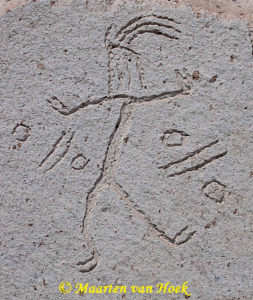
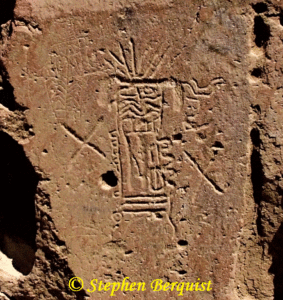
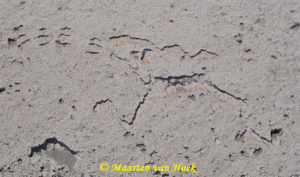
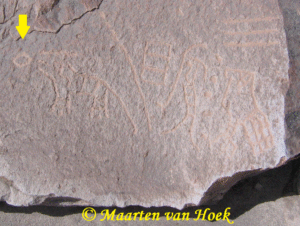
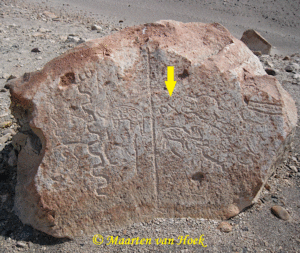

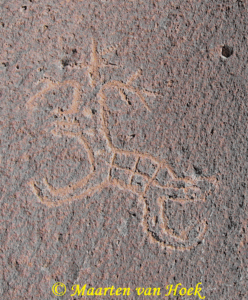
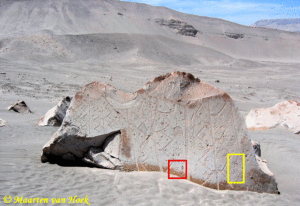
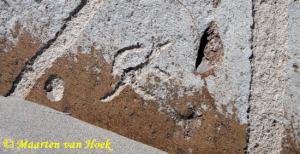
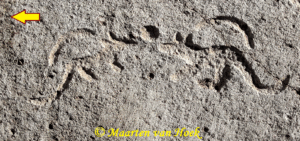
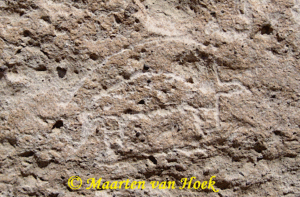
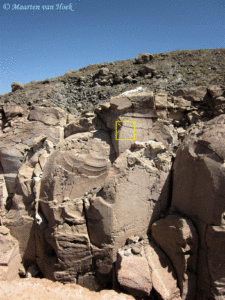
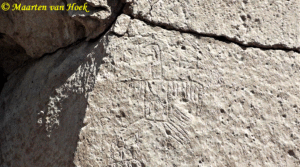
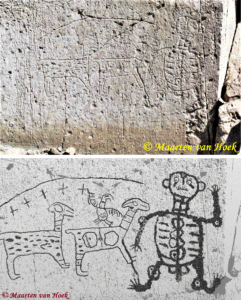
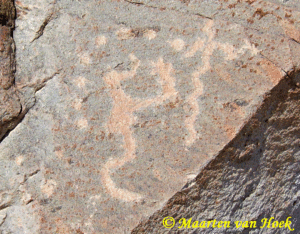
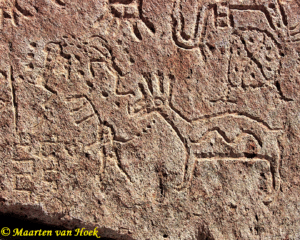
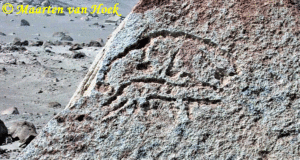
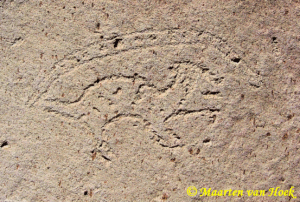
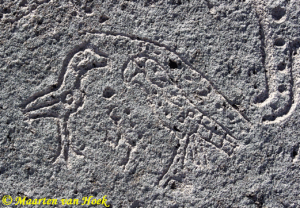
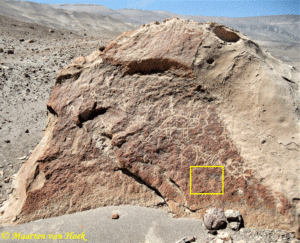
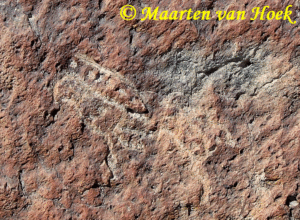

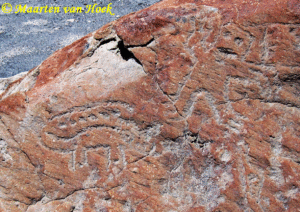
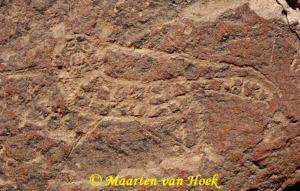
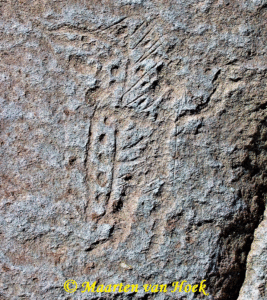
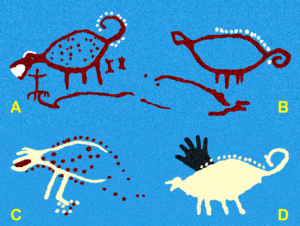
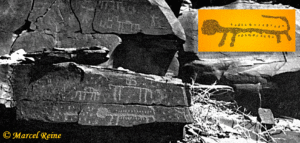
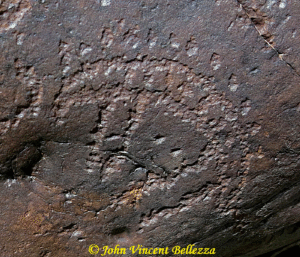














Leave a Reply